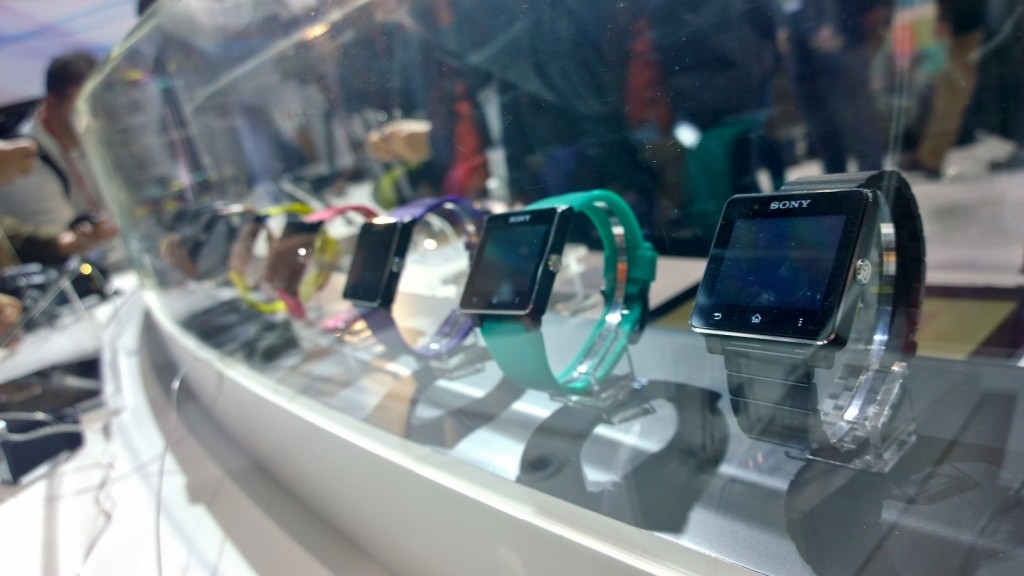
Smartphone-connected watches and bracelets have emerged as the technological phenomenon for 2014 as manufacturers rush for new sources of revenues.
At the industry’s biggest annual fair, the February 23-27 World Mobile Congress in Barcelona, Spain, players from global leader Samsung to China’s Huawei and Sony Mobile released a string of such devices.
Connected by wireless Bluetooth technology to the handset, they let users take calls and check emails or text messages. Many now offer to track your every step, read your heart rate, and even monitor your sleep pattern.
Mobile titan Samsung showed off a Gear 2 watch with sports tracking software, a heart rate sensor and camera; and a sleek Gear Fit bracelet, also with a pulse sensor, featuring a curved touch screen that wraps around your wrist.
China’s Huawei presented its TalkBand B, which has a pedomotor and pop-out earpiece for taking calls.
Sony Mobile is banking on its SmartBand SWR10, which keeps a record of your movements; the photographs you take; your communications and even the music you listen to. It will measure your sleep cycle, too, to decide the best moment to wake you.
South Korea’s LG said it would release a smart watch this year.
The big question mark in the industry is whether Samsung’s archrival Apple, which traditionally skips the mobile fair, is developing a much-awaited iWatch or similar mobile device.
As smartphone sales slow in mature markets such as the United States or Western Europe, such connected objects offer a chance to pry open the wallets of consumers reluctant to update their devices.
Global smartphone sales surged 42.3 percent to 968 million units last year, powered by demand for cheaper devices in developing markets, according to industry research group Gartner Inc.
Yet sales in mature, more profitable markets actually slowed, it said.
Research house Canalys predicts sales of connected bracelets and watches, however, will surge to 17 million units this year, and 45 million in 2017.
In Barcelona, manufacturers showed off some examples, from a connected basketball that can improve your shot to a smart toothbrush that gives you tips on technique.
“The world is approaching a tipping point in technology,” Nokia chairman and interim chief executive Risto Siilasmaa told reporters in Barcelona.
“We see a world where connectivity will expand massively, linking everyone and everything, altogether tens or hundreds of billions of physical objects.”
Objects would be aware of their location, temperature, motion, and chemical composition, while also being capable of communicating to each other, said the head of Nokia, whose handset division is being taken over by Microsoft.
– ‘Massive’ data flows –
“Massive flows of information will come from these objects, making today’s data traffic look modest,” Siilasmaa said.
Excluding computers, phones and tablets, there were 175 million connected objects in 2013, a market worth 24.2 billion euros ($33.0 billion), according to research house Idate.
That figure is predicted to rise to 470 million objects generating revenue of 40 billion euros by 2017, Idate said.
Market analysts booz&co estimated that 80 percent of revenue in the connected objects industry will go to information service providers such as Google, not the networks.
Yet as networks becomes more advanced, the operators can gather greater volumes of real-time, potentially lucrative data about each of their users.
As operators learn to analyse each user’s location, surroundings and habits, that information could spark a boom in personalised advertising, providing customers opt-in, analysts say.
Improved location and personal data-based advertising could generate as much as $44 billion a year in revenue by 2017 for network operators, according to a study by mobile network technology group Syniverse.
Indeed, research house Gartner Inc. predicts that global mobile advertising will grow from an expected $18 billion this year to $42 billion in just three years, helped in part by geolocation-based publicity drawing in smaller, local advertisers.

